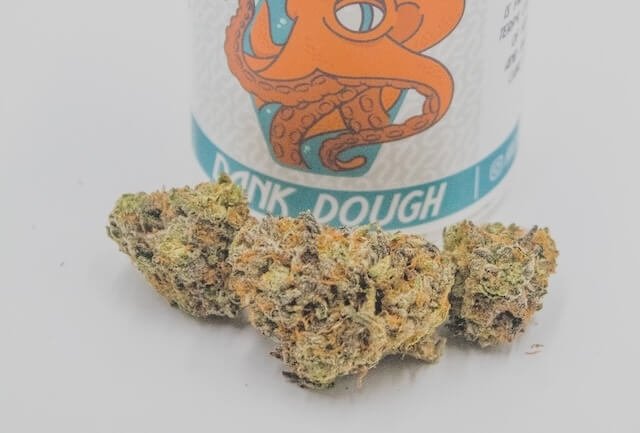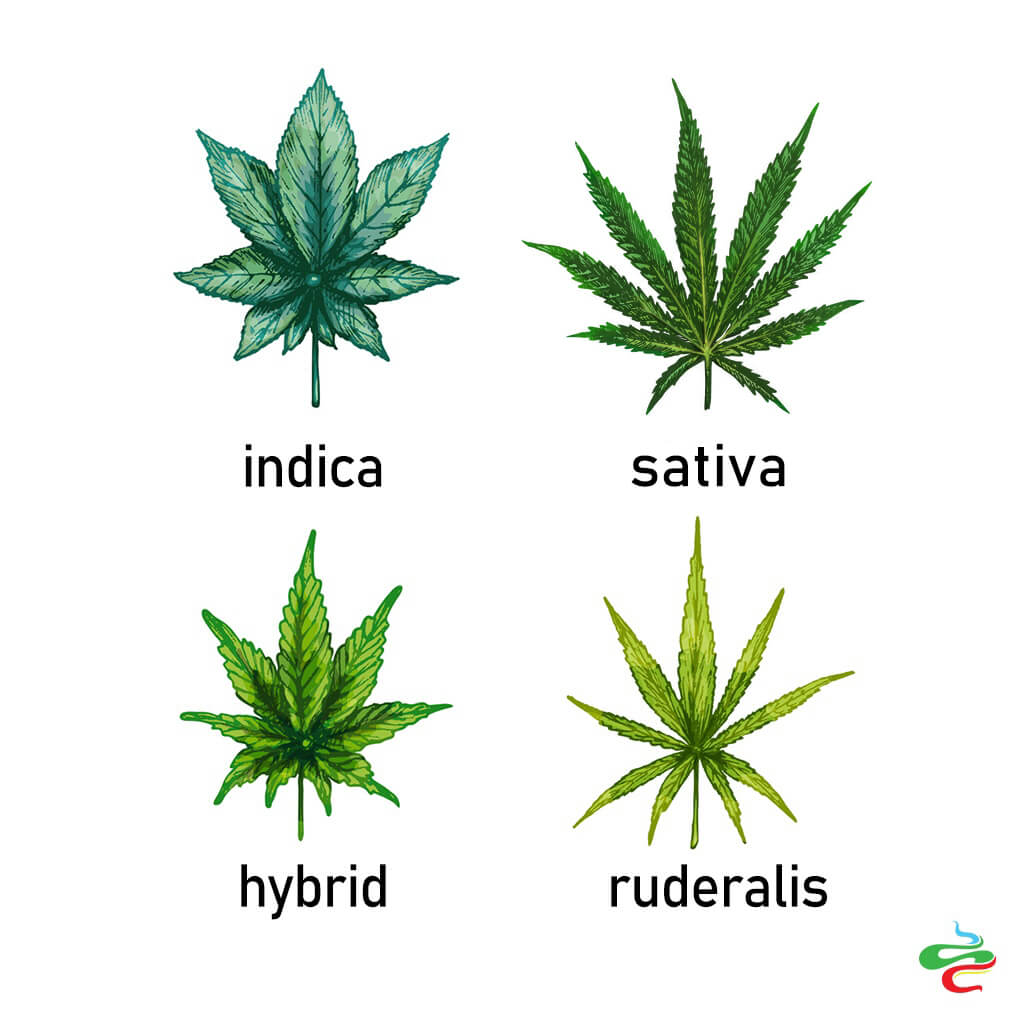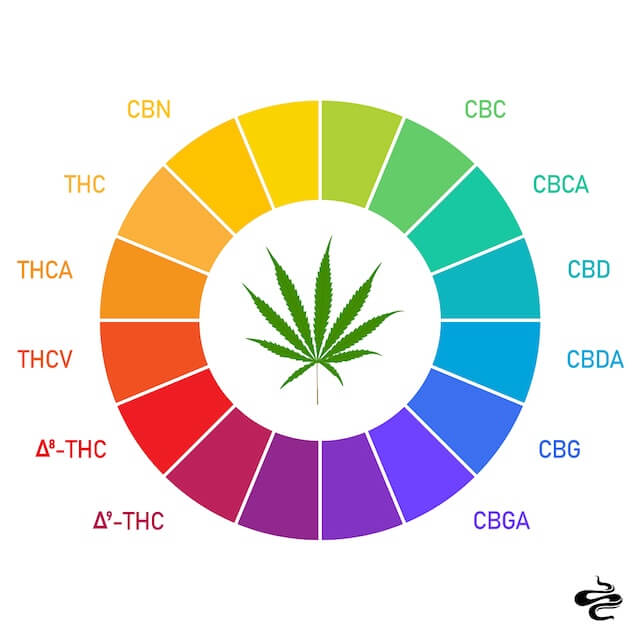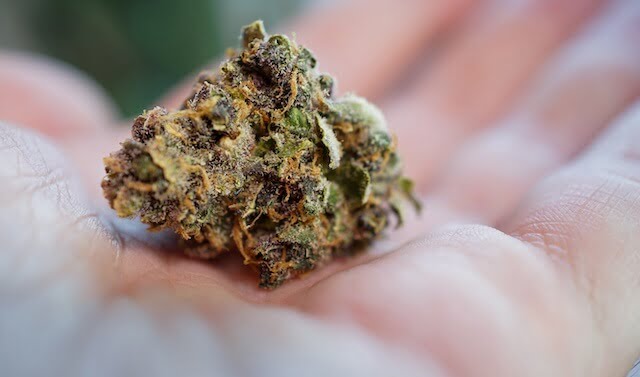If this is your first time venturing into the world of cannabis, you might be overwhelmed by the sheer number of choices available. Here we aren’t even talking about all of the different forms of cannabis, such as flower, hashish, oil, edibles, and more, but rather just the strains of flower. For those who don’t know, there are literally thousands of different cannabis strains out there, which makes choosing a specific one a challenge.
If you’re someone who hasn’t tried cannabis before, it’s always a good idea to familiarise yourself with the different types first. Different cannabis strains can have very different effects on both your mind and body, they can have different flavours, varying THC and cannabinoid levels, and so much more. In fact, choosing the right strain of cannabis for you could be considered a science, because there are so many different factors to consider.
Although we obviously can’t examine each individual cannabis strain, we can provide you with information about how to choose the right one for your needs and preferences. We’ll cover everything you need to know to make your own choice between different marijuana strains, including the types of strains (indica and sativa), THC and CBD levels, flavours, effects, and so much more! Let’s find out everything there is to know about cannabis strains!
What Are Cannabis Strains?
Cannabis or marijuana strains are all different types or subspecies of the cannabis plant, with the three main types being cannabis indica, cannabis sativa, and cannabis ruderalis (there are also hybrid mixes of indica and sativa). Then, within each of these categories, particularly within the indica and sativa (and hybrid) categories, there are hundreds, if not thousands of sub-strains or subspecies to choose from.
To make this easier to understand, let’s take a type of animal, the bovine. Bovines are a type of animal composed of 10 genera, with cows, bison, yak, and buffalo being a few types of bovines. Within the genera of cows, we have many different types, such as highland cows and angus cows, among others.
It’s really the same with cannabis. We have cannabis, which can be divided into three groups (indica, sativa, ruderalis), each of which have hundreds or thousands of sub-strains within, such as Dank Dough, which is a sativa-dominant hybrid.

There is also the issue of marijuana versus hemp, with marijuana plants being defined as those that contain elevated THC levels, and hemp plants being those that contain low THC levels, often well under 1%, although they often contain high THC levels.
Technically speaking, hemp and marijuana plants are the same species, with the difference being that marijuana contains higher levels of THC whereas hemp does not. Marijuana may also contain high levels of CBD. This is often considered more of a legal difference than anything else.
However, for the purposes of today’s article, we are more interested in marijuana strains than hemp strains, mainly because the psychoactive effects, the high that you feel from cannabis, comes from THC, not CBD. While CBD may have potential therapeutic benefits, it is not intoxicating or psychoactive. Since you’re likely looking for the intoxicating effects, it’s high-THC marijuana strains that we will focus on.
Understanding Cannabis Genetics
Now that we know what the three main types of cannabis are, let’s take a closer look at each of them to figure out which type is right for you.
Indica
Indica strains of cannabis are known for having fairly high THC levels, often between 15% and 25%, and sometimes even higher. For those who don’t know, THC or tetrahydrocannabinol is the primary psychoactive ingredient that can be found in cannabis plants. As these strains often have high THC levels, you can expect the effects to be fairly pronounced.
In terms of the effects you feel from indica strains, you can expect these to be fairly sedative in nature, and while indica strains produce both a body high and a head high, it’s the body high that is usually far more pronounced.
Indica strains often make your body feel very warm and tingly, your limbs may feel heavy, you’ll feel like you are sinking into your sofa, and you’ll likely feel tired and sedated, as well as hungry.
However, indica strains also produce a sense of euphoria and elation, along with a general sense of calmness and relaxation, which is the cerebral or head high aspect of indica. The main takeaway here is that indica strains will often hit your body much harder than your head, and you’ll generally feel relaxed, heavy, and sedated.
Indica strains with high THC levels are often used in an attempt to treat both acute and chronic pains, headaches, a lack of sleep, nausea, and anxiety, among other conditions. Indica strains, due to their sedating nature, are often considered best for relaxation and nighttime use, something that can help you wind down from a long day. Interesting to note is that indica strains generally have moderate CBD levels as well, more so than sativa.
Sativa
We then have sativa strains, and although indica strains can contain very high THC levels, sativa strains are generally even stronger, often containing anywhere from 15% to 30% THC, and often even higher.
On the other hand, whereas indica strains tend to contain moderate to high CBD levels, sativa strains have lower levels of CBD. Simply put, indica strains have moderate to high THC levels and moderate CBD levels, whereas sativa strains usually have higher THC levels but lower CBD levels.
Believed to be due to the higher THC levels, sativa strains often have a much stronger cerebral effect compared to indica strains, which means that they hit the head much harder. Sativa strains are thought to be much more energetic and uplifting in nature.
Some of the common cerebral effects of sativa strains are feeling more uplifted, happier, energetic, talkative, giggly, elated, and euphoric. Many people say that they feel as though their heads are floating up in the clouds.
Sativa strains are usually more mentally intoxicating than indicas, but they don’t affect the body as much. While sativa strains may still produce a bit of a body high, such as slight tingling and heaviness, the effect on the body is much less pronounced than with indica strains.
Many people use sativa strains in an attempt to be more energetic, more creative, mentally alert, and in some cases even to reduce fatigue. What is important to note however is that the strong mentally stimulating effects of sativa strains, believed to be a result of elevated THC levels, may lead to paranoia or anxiety if consumed in large quantities.

Hybrids
Between natural cross-pollination and scientific crossbreeding, there are also plenty of hybrid strains out there, which are combinations of indica and sativa. For many years, cannabis strains, indicas and sativas, have been bred together to create new strains with desirable traits.
These strains can have vastly different effects and properties depending on what the parent strains are. Some hybrids may have an even split of 50/50 indica and sativa, whereas others may lean heavily in one direction or another. Therefore, it is hard to provide a general description of what to expect from a hybrid strain, as each one can be very different from the last.
An indica-dominant hybrid will produce a moderate to strong body high and a lighter head high. A sativa-dominant hybrid will produce a strong head high and a milder body high. An evenly balanced hybrid will produce both a moderate head and body high.
Ruderalis
Although ruderalis strains are hard to find and almost nearly impossible to purchase, these plants can often be found in the wild.
Ruderalis strains have low THC levels, usually below 3%, which means that they don’t produce much of a notable high, but they may have relatively high CBD levels. Ruderalis may be beneficial therapeutically, but it’s really not something most people have access to.
THC vs CBD Cannabis Strains – The Differences
Now that we know the difference between indica, sativa, hybrid, and ruderalis, let’s take a closer look at the main differences between CBD and THC. Before we do that, however, let’s quickly summarise some facts about the different types of cannabis and how much THC and CBD they generally contain.
THC
Perhaps one of the most important things that you need to know about cannabis is the difference between THC-heavy strains and CBD-heavy strains. First, we have THC, which stands for tetrahydrocannabinol. This is the primary active compound in marijuana, and it is a psychoactive one. Its psychoactive and intoxicating properties are what get you high. When people look for cannabis to get a buzz going, it’s THC that they want.
THC interacts with your endocannabinoid receptors, specifically both your CB1 and CB2 receptors. In particular, it is the interaction of THC with your CB1 receptors that is believed to cause a noticeable high.
THC can have a variety of effects on both the mind and body, many of which we’ve discussed above. In general, THC can make you feel euphoric, uplifted, creative, giggly, talkative, happy, calm, less stressed out, relaxed, floaty, heavy, tingly, like your limbs are buzzing, and more.
It may also make some people feel very sedated, tired, fatigued, and hungry. Many people also use THC in an attempt to treat various conditions such as depression, anxiety, chronic pain, fatigue, sleeplessness, nausea, and more. As discussed above, exactly how THC makes you feel in a large depends on the exact strain in question, whether indica or sativa.
CBD
We then have CBD-heavy strains, which are those that are rich in cannabidiol. CBD is the other major cannabinoid found in cannabis plants, besides THC. The biggest difference here is that while THC is psychoactive and intoxicating, CBD is not.
CBD has a very limited potential to interact with your CB1 receptors, which is why it is thought to have a distinct lack of psychoactivity. CBD will not make you feel high and it really won’t alter your mental state. It’s not going to impair your cognition or judgement either, not like THC.
In other words, CBD produces no noticeable effects that you can feel right away from smoking or ingesting it. Rather, CBD is thought to be purely therapeutic in nature. CBD has the potential to provide you with a variety of benefits, both for your mind and body.
Many people who take CBD do so in an attempt to treat a variety of conditions including nausea, sleeplessness, pain, inflammation, anxiety, stress, and more. CBD strains are ideal for those people who want to reap all of the therapeutic benefits of cannabis without actually getting high.
How to Choose the Best Cannabis Strain – Factors to Consider
Now that we’ve covered all of the basics about cannabis plants, let’s take a closer look at how to choose the best cannabis strain for you.
1. Cannabinoid Content
Without a shadow of a doubt, the number one most important factor considered when choosing a cannabis strain is the cannabinoid content. What we are talking about here are the types of cannabinoids that the strain in question contains. Find out what cannabinoids are in this in-depth article.

As we’ve discovered above, and covered in great detail, most cannabis strains contain either an abundance of THC or CBD, and in rare cases, some strains may contain both. Of course, there are also other cannabinoids to think of including, but not limited to, CBG, CBN, Delta-8 THC, and many others.
That said, all cannabinoids but the two major ones, THC and CBD, are generally present in marijuana strains, but in exceedingly low quantities, usually well under 1%. Therefore, the main decision you have to make here is between THC and CBD. Remember once again that THC is psychoactive whereas CBD is not.
2. Potency & Your Tolerance
What you then need to consider is how potent the strain in question is. Now, if you choose CBD, this is not nearly as relevant, because CBD won’t get you high. Although you’ll reap many more therapeutic benefits out of a strain that has 25% CBD than compared to one that has 10% CBD, because it doesn’t produce a notable psychoactive high, you won’t actually notice much of a difference when consuming it.
However, the potency is very important if we are talking about THC. Remember that 10% and lower is considered fairly low, between 10% and 20% is considered moderate, between 20% and 25% is considered high, THC level above 25% is considered ideal for expert connoisseurs.
The fact of the matter is that even small amounts of THC can be quite potent, particularly for beginners. Also be aware that excessive THC levels, when consumed in high quantities, can also lead to some side effects such as paranoia and anxiety.
Therefore, you need to consider what level of experience you have with cannabis and what your tolerance level is like. For instance, if it’s your first time trying cannabis, you’ll probably want to stay away from any strain that has over 20% THC, as it will probably be too much for you.
3. The Effects & Your Intended Purpose
When choosing the right cannabis strain for you, you then also need to determine what effects you are looking to feel. More than anything else, this really comes down to the difference between indica strains, sativa strains, and hybrid strains.
Remember that indica strains tend to be better for nighttime use, as they usually make you feel heavy, sedated, tired, hungry, relaxed, and calm. Indica strains are ideal for use later in the day, and for just hanging around and relaxing. However, an indica strain is not something you want to consume if you have a long day ahead, because it will not provide you with energy, but rather sedate you.
Also remember that indica strains tend to be more body centred as opposed to cerebral, which means that they produce a strong body high, along with a limited head high. Many people like indica strains for their potential to treat pain, nausea, sleeplessness, and anxiety.
On the other hand, if you need a strain that is more uplifting, euphoric, energetic, and will make you feel like you’re ready to take on a long day ahead, then a sativa strain is probably the better choice for you.

Just keep in mind however that sativa strains generally contain more THC than indica strains, which can lead to symptoms such as paranoia and anxiety. If you need a strain of cannabis that will help relax you and uplift you, but also won’t put you to sleep, so you can take on a long day ahead, then sativa is the way to go.
Of course, if you want something that fits neatly in between, we recommend going for a hybrid, something that contains both sativa and indica genetics. The bottom line here is that indica, sativas, and hybrids all produce slightly different effects and feelings, so you need to determine what effects you want to feel, and this will help you choose the exact strain to purchase.
4. The Terpene Profile & Flavours
The next factor that you then need to take into account is what types of terpenes the cannabis strain in question has. For those who don’t know, the terpenes are in simplest terms the essential oils of the cannabis plant. Terpenes by nature are designed to protect the cannabis plant from predators and disease, but as far as we are concerned, the consumer, they serve to add flavour and aroma to the mix.
For instance, some of the most common terpenes contained in cannabis plants include pinene, humulene, limonene, myrcene, and caryophyllene, each of which have their own specific sense and flavours. For instance, pinene is very woodsy and smells like pine trees, humulene is spicy and herbal, limonene has a citrus scent, myrcene is earthy, musky, and fruity, and caryophyllene is often spicy and earthy.
Also consider that terpenes, when combined with cannabinoids, create what is known as the entourage effect. This is when terpenes and cannabinoids work together to produce additional effects. What is important to note here however is that terpenes themselves don’t produce any kind of high or psychoactive effect.
However, some terpenes are known to produce calming effects, some might make you feel less nauseous, and some might be sedating in nature. Therefore, it’s strongly recommended that you research what all of the different therapies are, and how they might affect your state of mind and how you feel in general.
5. Rarity and Cost
Although it’s certainly not the first consideration to take into account, how rare and costly the strain is might be of relevance to you. This is especially the case if you are operating on a relatively tight budget. The simple reality is that there are some types of cannabis that are far more expensive than others, several types.
For instance, you could get fairly weak and low-quality weed for anywhere between $2 and $5 per gram, whereas the more expensive stuff might cost you $20 per gram or more.
Of course, how expensive it is will most likely depend on its rarity. That said, if you are looking for something extremely unique that is unlike anything you’ve ever found before, going for the higher quality and rarer options is recommended.
6. Reviews and Testimonials
Although you can’t always take what other people have to say at face value, mainly because different types of weed affect different people in different ways, it is still worth looking into what other people have to say about various strains.
In general, if the people doing the reviews and testimonials are quite experienced, then you can at least somewhat rely on them to figure out what the strain might do for you.
Although you have to take everything said with a grain of salt, if you read 100 reviews of the same strain that all have the same narrative, then you can rest assured that you at least have a good idea of what you’re getting into.
7. Appearance
The appearance of the strain is usually not the first thing we’d look out for here, but that said, it never hurts to get a bud that looks really cool.

Conclusion on Choosing Cannabis Strains
There you have it folks, now that you know what all of the most important factors in choosing a cannabis strain are, you can make an informed decision for yourself.
Remember the differences between THC and CBD (as well as other cannabinoids), the differences between indica, sativa, and hybrid, different terpenes, and more. What it really all comes down to here is a matter of personal preference and what sort of effects you are looking for.
FAQs
What Are The Main Factors to Consider When Choosing the Best Cannabis Strains?
The main factors to consider when choosing a strain include cannabinoid content, potency, flavour, the specific strain (indica or sativa), and the cost.
Is Indica or Sativa Better for Me?
If you’re looking for a daytime strain, it’s sativa you want, and if you need a nighttime strain, indica is best.
What is an Ideal THC Level for Beginners?
For a total beginner, a THC level of no more than 15% is recommended.
Will CBD Make Me Feel High?
Although CBD has potential therapeutic benefits, it will not make you feel high or intoxicated.
How Do I Find Reliable Sources to Purchase My Cannabis Strains?
The best way to find reliable sources to purchase your cannabis is by doing some research online to see what the best local dispensaries (or online retailers) in your area are.






Leave a Reply